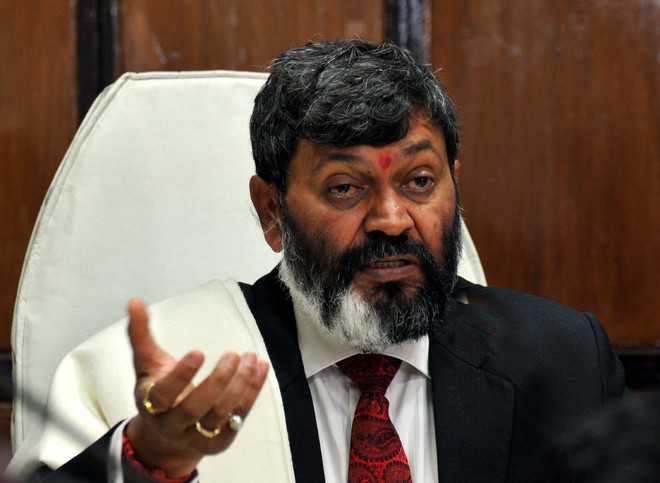Shriniwas Joshi
I Am not measuring Professor Arun Diwakar Nath Bajpai as Vice-Chancellor of Himachal Pradesh University but as a poet with his book Arun Satsai published by Prakashan Sansthan, New Delhi, costing Rs 200. He begins his foreword: “Poetry is not written, it is lived”. He adds that, so far, none has defined the poetry.
Actually, the poetry has been defined according to the poet’s visualisation. Sumitranandan Pant says, “Viyogi hoga pehla kavi, Aah se upja hoga gaan.” (The poetry is born of the grief of the first poet separated from his love). Balkrishna Navin says, “Kavi kuchh aisi taan sunao, jis se uthal puthal mach jaye” (The poetry should overturn all else). “Pratihinsa hi sthaayi bhav hai mere kavi ka” (Retaliation is the enduring disposition of my poet) was the definition of poetry by Nagarjun. Dhumil defined: “Kavita bhasha mein aadmi hone ki tameez hai” (The discernment of man is poetry in language). Edgar Allan Poe defines “Poetry as the rhythmical creation of beauty in words.” And Gulzar says: “If it bleeds, it is but a wound/ Otherwise, every hurt is a poem.”
When one speaks of ‘Satsai’, one immediately thinks of Bihari Satsai - seven hundred verses of Bihari - written in the early 17th century. It has couplets on devotion, moral policies and love. Professor Bajpai, in preface, has drawn the history of Satsai. He referred to ‘Ram Satsai’ (1554-1589) by Goswami Tulsidas. He says that Goswami’s contemporary Mahakavi Dev had also written ‘Gaatha Satsai’ and ‘Aryaa Satsai’ and adds that Rahim Dohavali was also accepted as ‘Rahim Satsai’.
He tells us that there are 23 types of couplets in Hindi and gives a list of those in the preface. He himself has composed Arun Satsai with 703 couplets and fancies writing couplets because he finds these uncomplicated, less time consuming, complete in themselves and hit the readers directly. Because of this quality of direct hitting, Alexander Pope, who wrote generally in heroic couplets, is most quoted after Shakespeare and Tennyson. I find that in Bajpai’s couplets every line rests on its own merits, no wonder, he took three decades to complete the book. Let us taste the tang of Arun Satsai: “Saaraa mangal Om se hi hota prarambh/Man prasanna, tan swastha ho atma ka stambh” (All wellness starts with letter OM/Keeps heart, health and soul at home) “Lampat, kapati, aalsi, nirguna, nipat ganwaar/ek na sadgun man mere durgun ka bhandaar” (Lewd, crafty, lazy, cheap and fool to the core/Is one with sans nobility and nasty qualities in store). Do cosmetics make a beauty? Bajpai says, “Cream, lipstick, powder, shobhaa ke saamaan/ vyarth lage yadi sundari ki na madhur muskaan.” (Cream, lipstick, powder and cosmetics in pile/ Are vain if the maiden has no dainty smile). We lived together and fought for the freedom of India together, but today: “Kanha aur Karim ko baantaa Ram, Rahim/ apne swarath hit kiya mazhab ko taquseem” (Kanha and Karim or Ram and Rahim/are one: bigotry splits them to please self-esteem). A couplet depicting simple living and high thinking reads: “Saade jeewan mein saadaa rehte uchh vichaar/ atah saadgi se rahe kare vinaya vyavhaar” (Simple living enfolds high thinking/EaseProfessor Bajpai is the Pope of the University. Read Arun Satsai and assess him as Pope (Alexander) of poetry.
TAILPIECE
A coquette: "Chitvan se de nimantrana pehle paas bulaaye/ Phir inkaare sumukhi jo uskaa kaun upaaye" (She first invites him with a lusty glance/ Then sulks, nullifying his advance)
— The writer is a retired bureaucrat
Unlock Exclusive Insights with The Tribune Premium
Take your experience further with Premium access.
Thought-provoking Opinions, Expert Analysis, In-depth Insights and other Member Only Benefits
Already a Member? Sign In Now










